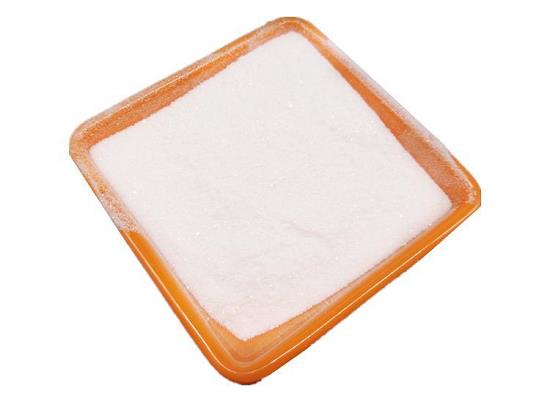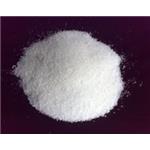Trimethylstearylammonium Chloride: Properties, Applications in Agriculture and its Preparation Method
General Description
Trimethylstearylammonium chloride is a versatile compound known for its strong antimicrobial and anti-inflammatory properties, making it suitable for both medical and agricultural applications. Its antimicrobial efficacy stems from a chemiluminescence reaction that produces hydroxyl radicals, effectively destroying bacterial cells. In agriculture, Trimethylstearylammonium chloride functions as a herbicidal ionic liquid (HIL), demonstrating high efficiency against various weed species, including resistant types. The compound’s solubility and stability enhance its application, while its preparation method involves a straightforward process ensuring high product stability and low production costs. Overall, trimethylstearylammonium chloride is crucial for advanced weed management and therapeutic uses.

Figure 1. Trimethylstearylammonium Chloride
Properties
Trimethylstearylammonium chloride is known for its high resistance and excellent antimicrobial properties. This compound demonstrates remarkable biocompatibility, making it suitable for various medical and biological applications. As a nanoparticulate agent, Trimethylstearylammonium chloride provides stability and dispersibility within biological systems, ensuring consistent performance. The antimicrobial efficacy of Trimethylstearylammonium chloride arises from its interaction with water, leading to a chemiluminescence reaction. This reaction produces hydroxyl radicals, which are highly effective in oxidatively destroying bacterial cells. The robust antimicrobial action of Trimethylstearylammonium chloride is a key feature that enhances its utility in disinfecting and sterilizing applications.
Anti-Inflammatory and Hydrophobic Properties
In addition to its antimicrobial activity, Trimethylstearylammonium chloride exhibits significant anti-inflammatory properties. This effect is largely attributed to its hydrophobic nature and the presence of methyl ethyl groups in its structure. The hydrophobic interactions contribute to the effective dispersion of Trimethylstearylammonium chloride in various media, enhancing its biological compatibility. The anti-inflammatory activity of Trimethylstearylammonium chloride underscores its potential in therapeutic applications, where reducing inflammation is crucial. Overall, Trimethylstearylammonium chloride's combination of antimicrobial and anti-inflammatory properties makes it a versatile compound in both medical and industrial fields. 1
Applications in Agriculture
Trimethylstearylammonium chloride is a specialized chemical used in agriculture, primarily due to its role in herbicidal formulations. This compound belongs to a class of herbicidal ionic liquids (HILs) that exhibit high efficiency in weed control. The application of trimethylstearylammonium chloride involves its integration into herbicidal products, where it acts as an effective herbicide through a reaction with common herbicidal acids. The resulting herbicidal ionic liquids are noted for their high thermal stability and surface activity, which enhances their performance in agricultural settings. In particular, trimethylstearylammonium chloride has been shown to effectively target and control various weed species, including common lambsquarters and flixweed, demonstrating comparable or superior efficacy compared to traditional herbicides.
Performance and Benefits in Agricultural Practices
The benefits of using trimethylstearylammonium chloride in agricultural practices extend beyond its herbicidal properties. Due to its solubility and stability, this compound allows for more efficient application and effectiveness in various environmental conditions. Field trials have confirmed that trimethylstearylammonium chloride-based herbicides perform exceptionally well, especially when used against weeds resistant to conventional treatments. The compound’s ability to maintain high activity levels, particularly in formulations containing phenoxyacids as anions, underscores its value in modern agriculture. Thus, trimethylstearylammonium chloride contributes significantly to improved weed management strategies, making it a valuable asset in the development of advanced herbicidal products. 2
Preparation method
The preparation of Trimethylstearylammonium chloride involves a detailed process starting with the N-methylation of dimethyl(octadecyl)amine using methyl chloride. Initially, dimethyl(octadecyl)amine is mixed with deionized water and ethanol in a reactor. Methyl chloride is then introduced slowly, followed by the addition of liquid alkali, ethanol, and hydrogen peroxide. The mixture is stirred for 20 to 30 minutes while monitoring the reaction progress. If the color of the reaction mixture is too dark, additional hydrogen peroxide is added. The pH of the solution must be kept below 6.5, and if necessary, 1.8 to 2.2 kg of liquid alkali and ethanol are added to adjust the pH.
Final Steps and Product Stabilization
After adjusting the pH and ensuring the content of free amine and ammonium salt is appropriate, the reaction mixture is evaluated. If the content of these components exceeds 1.5%, more methyl chloride is added. The reaction continues until the temperature drops below 60°C, at which point the product is discharged. This preparation method for Trimethylstearylammonium chloride ensures high stability and formability of the final product. The method is noted for its simplicity, operational efficiency, and low production cost, making it an effective approach for producing Trimethylstearylammonium chloride. 3
References:
[1] JULIUSZ PERNAK*. Alkyl(C16, C18, C22)trimethylammonium-Based Herbicidal Ionic Liquids[J]. Journal of Agricultural and Food Chemistry, 2016, 65 2: 253-532. DOI:10.1021/acs.jafc.6b04528.Lastest Price from Trimethylstearylammonium Chloride manufacturers

US $1.00/KG2025-04-21
- CAS:
- 112-03-8
- Min. Order:
- 1KG
- Purity:
- 99%
- Supply Ability:
- 10 mt

US $100.00-75.00/kg2025-04-21
- CAS:
- 112-03-8
- Min. Order:
- 1kg
- Purity:
- 99%
- Supply Ability:
- 5000


